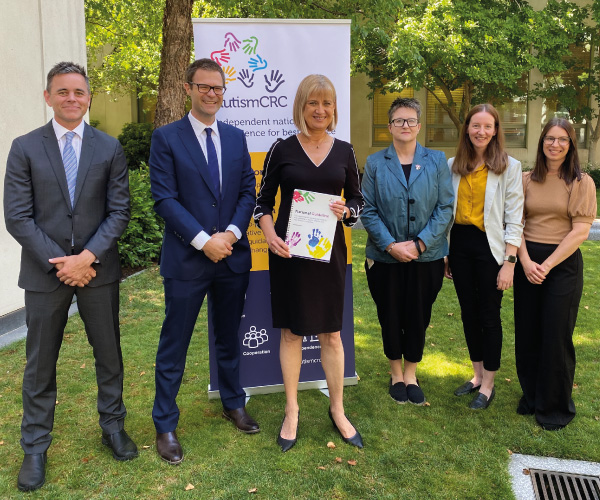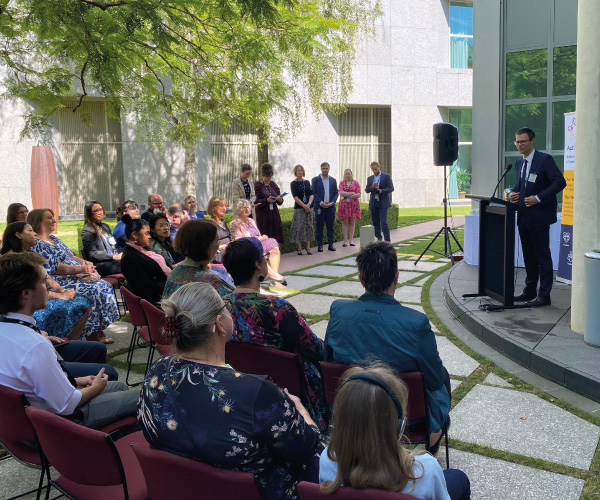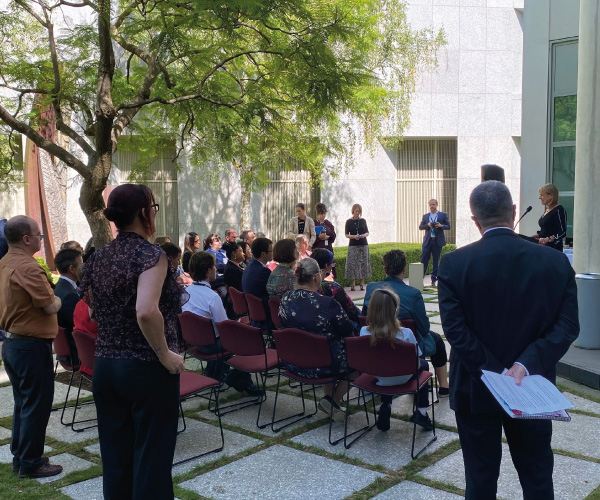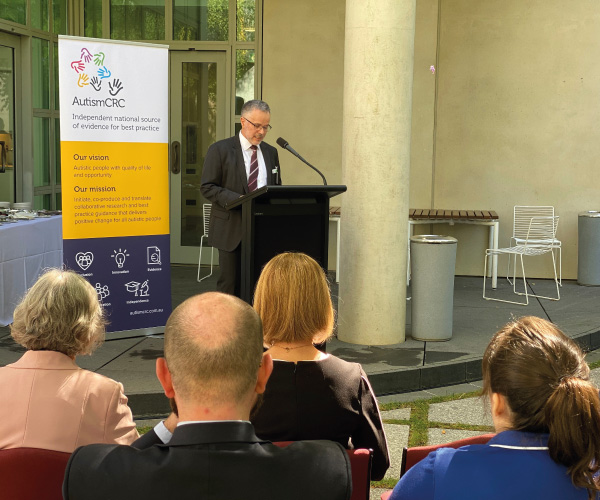Australia’s first national guideline for supporting the learning, participation, and wellbeing of autistic children and their families
Autism CRC’s new guideline for supporting the learning, participation, and wellbeing of autistic children and their families in Australia was launched by the Hon. Justine Elliot MP, Assistant Minister for Social Services, at Australian Parliament House this morning (Thursday 16 February).
The Guideline provides clear and consistent Recommendations and Practice Points for practitioners who deliver supports to autistic children and their families, to ensure they are doing so in ways that are effective, safe and desirable to children and their families. “These Guidelines represent a landmark moment for autism in Australia.
“For the first time, we have clear guidelines about what represents good clinical practice,” said Professor Andrew Whitehouse, Autism CRC’s Research Strategy Director, and Co-chair of the 15-member Guideline Development Group (GDG) that led the development of the Guideline.
The National Health and Medical Research Council (NHMRC) has approved all 84 Consensus-Based Recommendations within the Guideline. This indicates that the Guideline has been developed to the highest standard.
The new Guideline focuses on the delivery of non-pharmacological supports in community and clinical settings that aim to support children aged 0-12 years. However, the Guideline has a lifespan perspective, recognising that early supports should lay the foundation for a positive future.
The Guideline was developed through deep consultation with more than 1,000 Australians - autistic people, family members, and practitioners. Associate Professor David Trembath from Griffith University, who also Co-chaired the GDG said, “An important element of this Guideline was the involvement of autistic people on the GDG. This is a critical step forward and ensures that autistic voices are captured in clinical practice.”
Autistic adult, advocate and GDG member, Katharine Annear, agreed. “Participating in the GDG for this contemporary and potentially transformational guideline was a defining moment in my participation in advocacy for Autistic people. The project leads, GDG members and the research team were committed to co-design and consultation with autistic children and adults and their family members.”
To support its work in community consultation, the GDG formed a Reference Group, comprising representatives from organisations that play a critical role in supporting aspects of children’s health, development, education, participation, and wellbeing, and/or supporting parents and families in raising autistic children. These included representatives from Aboriginal and Torres Strait Islander peoples, Culturally and Linguistically Diverse communities and key government agencies. The Guideline’s Recommendations span the support pathway, including guiding principles, goal setting, selecting and planning supports, delivering supports, and the monitoring and safeguarding of supports.
Recommendations are key elements of practice to be followed for a practitioner to deliver evidence-based support. Recommendations are accompanied by Good Practice Points that provide critical context to each Recommendation, such as how it should be implemented in clinical practice, or how it is applied to a specific population or under specific circumstances. “The Guideline combines the best available research evidence, with evidence from clinical practice and evidence relating to the experiences, preferences, and priorities of children and their families,” said A/Prof. Trembath.
While providing guidance to practitioners delivering supports in community and clinical settings, the Guideline is also a valuable resource for autistic individuals, their families and supporters, organisations providing training to practitioners or students, and government policy-makers, program managers and funding bodies.
“An important takeaway from the Guideline is that services should be neurodiversity affirming which means that the goal of support is to build the capacity of children and families to learn, develop, grow and meet challenges together in acceptance of autism not in spite of autism,” said Mx Annear.
Autism CRC funded the development of the Guideline, assisted by the generous bequest of Basil Waugh. “We’re proud to have co-produced this guideline with the community, grounded in community need. We thank all who contributed for their time and continued support of our work,” said Andrew Davis, CEO of Autism CRC.
Autism CRC is committed to working with the sector on the uptake and implementation of the Guideline. “It is now critical that Government and other systems adopt this Guideline to ensure that all autistic children in Australia receive the highest quality support,” said Mr Davis.
Accessing the Guideline
The Guideline is available free of charge and can be accessed, both as a series of interactive webpages and as a downloadable pdf document, through a simple registration process.
You can read more information about the Guideline without registration. This section includes information about the development process, how to read and use the resources, and a list of Frequently Asked Questions.



